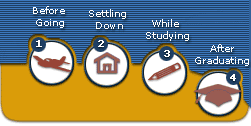 |
 |
 |
 |
 |
 |
 |
| Privacy Policy |
| Disclaimer |
| Terms & Conditions |
|
Meditation by Venerable Huei Hsuen In today�s world, we are often bombarded with so many problems that our emotions get all mingled up. Our heart is filled with confusion, lack of concentration, anger, greed, ignorance, etc. that we sometimes feel lost and helpless. Occasionally, we might be even asking the question of what do we want? Well, I personally think that all the questions can be answered through the practice of meditation. It is very important to take the time out to learn what meditation is really about, how it works and what preparation is necessary to produce any results. So what is meditation? To me it means the cultivation of equanimity and moral perfection. The most fundamental technique of meditation is that of �following the breath,� a favorite of meditators from the Buddha�s time to the Zen practitioners of today. In order to practice this, it is first necessary to find a quiet undisturbed place with subdued light and fresh air. One should then sit comfortably on the floor in something approaching the lotus or half-lotus posture. This posture is not merely some weird Asian cultural tradition, but is the result of generations of experimentation, and is best suited to provide the body with an erect stable, balanced, posture, requiring virtually no effort to maintain, yet conducive to wakefulness, unlike lying down. One is poised, but relaxed. After arranging the body comfortably, the spine may be rocked back and forth gently, like a metronome, until the point of perfect balance is found. Sometimes it helps to have a small cushion under the hips in order to tilt the pelvis forward and achieve a nearly effortless, perfect balance. When this is achieved, the focus on the breathing begins. The usual way to do this is to simply be aware of the rising and falling of the act of breathing without making any effort to alter the breathing. This is important, as nothing can be accomplished unless there is a feeling of effortlessness. When a meditator has successfully gotten his body to sit�relaxed, but poised and attentive�the vital energies will also begin to �sit� so to speak as one continues to follow the breathing. Then, as the conscious and unconscious begin to integrate, the mind at last will begin to �sit.� Stray thoughts may come up from the unconscious, or a chain of association may develop from a false sense of perception, but one should regard these without attachment like passing clouds or bubbles. Unknowingly, the troubled mind will gradually become calm like the unruffled surface of a deep pool. It is then that the first jhana, or absorption, is attained, characterized by the presence of discursive and analytical thought born of a sense of detachment and accompanied by a feeling of great bliss. After the quieting of discursive and analytical thought, and by gaining inner tranquility and one-pointedness of mind, the second absorption is attained. This is characterized by collectedness (samadhi) and a feeling of great bliss again. As the meditation deepens, the feeling of bliss also fades away, leaving only the equanimity of mindful, clearly conscious collectedness. This is the third absorption. When this state reaches sufficient stability and depth, one passes beyond the possibility of pleasure and pain, and attains the fourth absorption. And of course, there are states of even greater subtlety beyond these. One who perfects the attainment of these states and is not seduced by the psychic powers is said to have achieved liberation. But we need not worry about attaining all the states because that would take up another large portions of our time. Nonetheless, with a most sincere heart and right mindfulness, one should have no trouble in learning to attain the first absorption, which can be useful in providing us the clarity and lucidity of mind needed to overcome our day-to-day problems. This information is provided by Venerable Huei Hsuen of Los Angeles Buddhist Union located in Rosemead, California. Free Meditation Instruction is offered. |
 |
| ||||||||||||||||||||||||||||||
|
| ||||||||||||||||||||||||||||||
Home | About iStudentCity | Job Opportunities | Contact iStudentCity Hall
Copyright©2000-2009, iStudentCity.com. All Rights Reserved.
